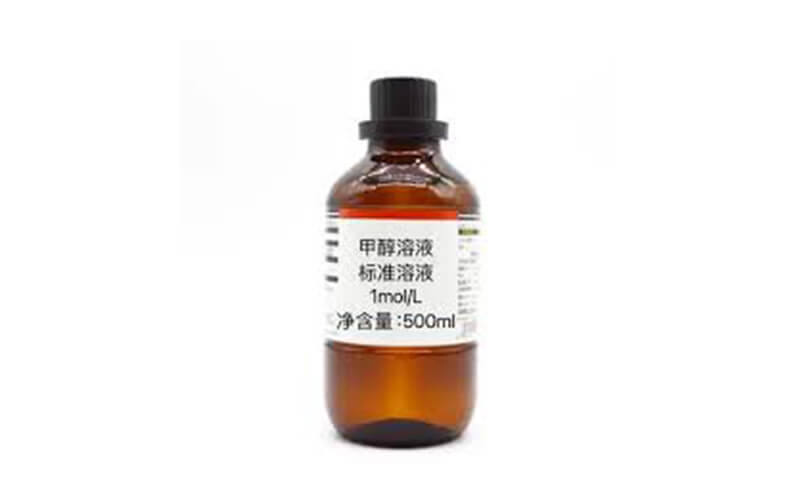Why Methanol Works Better for Chromatography Compared to Acetonitrile
Choosing the right solvent in chromatography can make or break your results. While acetonitrile and methanol are both popular options, each has strengths and weaknesses. However, methanol often outshines acetonitrile in specific applications for several reasons. Here’s a breakdown of why methanol might be the better choice for your chromatography needs.
Key Differences Between Methanol and Acetonitrile
Methanol and acetonitrile have distinct chemical and physical traits that affect their performance in chromatography. These differences influence factors like elution strength, column pressure, and UV absorbance.
Elution Strength
Elution strength determines how well a solvent moves analytes through the column. Acetonitrile often provides a higher elution strength than methanol when mixed with water in the same ratio. This means acetonitrile tends to push analytes through the column faster. However, methanol’s lower elution strength can sometimes be an advantage. It allows better separation of more complex analytes, especially when fine-tuning retention times is critical. For an in-depth look at this dynamic, Shimadzu’s technical analysis offers valuable insights.
Column Pressure
Methanol has a higher viscosity than acetonitrile, meaning it can increase column pressure under high-flow conditions. While this might seem like a drawback, high-pressure-resistant columns have made methanol more manageable. Many labs find methanol’s benefits outweigh the minor increase in pressure, especially when working with specific compound classes.
UV Absorbance
Methanol scores higher when it comes to UV detection sensitivity. It has a lower UV absorbance cutoff compared to acetonitrile, making it ideal for detecting compounds at very low wavelengths. This can be crucial for researchers analyzing materials with subtle UV signatures, as it allows for cleaner baselines and greater sensitivity.
Selectivity and Separation Efficiency
Beyond the basic properties, the ability to achieve clean separations is what really matters. Methanol offers advantages in selectivity and peak quality over acetonitrile.
Methanol
| Property | Details |
|---|---|
| Chemical Formula | CH₃OH |
| Molecular Weight | 32.04 g/mol |
| Appearance | Colorless liquid |
| Odor | Slightly sweet alcohol-like |
| Density | 0.7918 g/cm³ (20°C) |
| Melting Point | -97.6°C |
| Boiling Point | 64.7°C |
| Solubility | Completely miscible with water |
| Primary Uses | Fuel, solvent, methylating agent |
| Hazards | Flammable, toxic |
| CAS Number | 67-56-1 |
Acetonitrile
| Property | Details |
|---|---|
| Chemical Formula | C₂H₃N |
| Molecular Weight | 41.05 g/mol |
| Appearance | Colorless liquid |
| Odor | Slight ether-like |
| Density | 0.786 g/cm³ (20°C) |
| Melting Point | -45.7°C |
| Boiling Point | 81.6°C |
| Solubility | Completely miscible with water |
| Primary Uses | Solvent, intermediate in organic synthesis |
| Hazards | Flammable, toxic |
| CAS Number | 75-05-8 |
Impact on Peak Shapes
Methanol often provides sharper and more symmetrical peak shapes for certain analytes. This is particularly true for compounds that interact strongly with polar solvents. Acetonitrile, on the other hand, can sometimes cause peak tailing, which makes it harder to quantify results accurately.
Protic vs. Aprotic Properties
Methanol is a polar protic solvent, while acetonitrile is polar aprotic. This difference in solvent polarity influences how they interact with analytes. Methanol’s protic nature allows it to form hydrogen bonds, enhancing its ability to separate polar compounds. Acetonitrile, being aprotic, lacks this ability, which can limit its effectiveness in some scenarios. Learn more about solvent polarity effects here.
Practical Considerations for Laboratories
Lab managers and researchers need to think beyond chemistry. Cost, availability, and ease of use all impact a solvent’s practicality.
Cost and Availability
Methanol is generally less expensive and more widely available than acetonitrile. Acetonitrile prices spiked in recent years due to supply chain issues and increased demand in the pharmaceutical industry. This makes methanol a more budget-friendly option for many labs.
Safety and Handling
Methanol does have a downside when it comes to toxicity. It’s more hazardous to handle than acetonitrile, so labs must implement appropriate safety measures. However, with proper training and protocols, most laboratories manage methanol safely and effectively.

Ease of Degassing
Degassing solvents removes dissolved gases to prevent bubbles in the chromatographic system. Methanol mixes more easily with water, making it simpler to degas. Acetonitrile is less cooperative in this regard, often requiring longer degassing times or additional preparation steps. This ease of mixing saves time without compromising results, as highlighted in this discussion.
Conclusion
While acetonitrile and methanol each have unique benefits, methanol often comes out on top for chromatography. Its advantages in selectivity, UV absorbance, and practical usability make it an excellent choice for many applications. Before picking a solvent, consider your project’s specific needs to ensure the best possible results.







